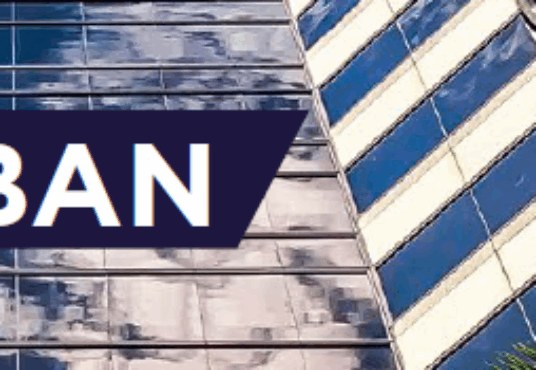Auspicious Start to 2018
Transaction volume increased 7.2% year-over-year (YoY) to $100.8 billion (B) in the first quarter of 2018 (Q1 2018). That is the first quarter since Q3 2016 to register YoY volume growth. While overall volumes were below those seen in the first quarters of 2015 and 2016, activity remained substantially above both the 2014 level ($84.9B) and the long-term average ($63.4B).
The core single asset sales market (<$250 million [M]) remained particularly robust; volume increased 10% YoY to $56.5B—the highest level on record. Multifamily, industrial and suburban office drove the increase. Megadeal volume (>$250M), which was restrained in 2017 and especially in the first quarter of that year, registered the greatest YoY increase—16%—the highest volume since 2015. Multifamily and hotel megadeals drove the increase. Portfolio sales were flat YoY, and although down from their levels in Q1 2015 and Q1 2016, they remain above levels seen in earlier years. Entity/M&A transactions were outliers, down 15% YoY—a decline even from their depressed volume registered in Q1 2017. Entity volume was almost entirely attributable to the close of the previously announced management buyout and privatization of GLP. Regency Centers’ takeover of Equity One REIT played the same role in Q1 2017.
Capital Expanding Beyond Major Metros
As was the case in 2017, transaction activity in early 2018 continued shifting towards secondary and tertiary markets where volumes increased 6.7% and 5.6% YoY, respectively. Major market volume was flat. The one exception to this trend was in multifamily transactions, where major market sales increased 45% YoY compared to 21% and 14% in secondary and tertiary markets, respectively.
Transaction activity in the major metro markets was far from uniform. New York City (NYC) metro volume increased 29% YoY in Q1 2018 led by strong increases in multifamily (44%), CBD office (74%) and hotel (626%) sales. NYC transaction volume was depressed for much of 2017 and only began to recover in the fourth quarter of last year, so these figures demonstrate continued positive momentum in the Big Apple. Similarly, Washington DC metro volume rose 31% YoY on strong multifamily (129%) and suburban office activity (49%). Chicago sales also increased—by 18%—as growing industrial (87%) and CBD office (145%) transactions offset declines in retail (-60%) and suburban office (-20%).
In contrast, volume declined in the metropolitan areas of Los Angeles (-7%), San Francisco (-29%) and Boston (-56%). In Los Angeles, higher multifamily, industrial and retail sales activity was insufficient to offset a 34% decline in suburban office volumes. In San Francisco, rising multifamily, hotel and industrial sales activity was overwhelmed by falling volumes in CBD office (-94%), suburban office (-27%) and retail (-80%). Finally, the decline in Boston volume was almost entirely attributable to a 97% reduction in CBD office transactions. The first quarter of 2018 suffered in comparison with the unprecedented $3.4B in CBD office that traded in Q1 2017.
Among secondary markets, Phoenix (60% YoY), Denver (47%), Seattle (31%), Houston (30%) and Sacramento (114%) recorded some of the largest YoY increases in volume and accounted for the majority of the rise in secondary market sales activity. In contrast, Charlotte (-56%), Dallas (-17%), Miami (-20%) and Baltimore (-40%) experienced significant declines. The decline in Charlotte was particularly pronounced due to the $1.0B Ballantyne office portfolio acquisition by Northwood that closed in Q1 2017.
Multifamily, Industrial Ascendant
Multifamily sales accounted for the largest proportion of transactions in the first quarter—31%. That was in line with the average of recent years but significantly above the figure for Q1 2017 during which multifamily sales were depressed. Office transactions represented 25% of total volume, down from their three-year average of 29%. Industrial sales accounted for nearly one-fifth (18%) of total activity compared to their three-year average of 15%, capturing share from both office and retail. Hotel sales were also elevated (10% vs. 8% average).
Consistent with the above, industrial activity increased significantly—up 36% YoY. This was an acceleration from the already robust pace that industrial sales had exhibited in recent quarters, having risen 26% in the 12 months ended March over the preceding period. The warehouse segment drove the increase, rising 69% YoY in Q1 2018 compared to a 16% decline for flex properties—although flex activity was up 18% on a 12-month basis.
Multifamily sales also advanced strongly in the first quarter, rising on both a quarterly (27% YoY) and 12-month basis (8%). Garden (13%), Suburban high-rise (43%) and CBD high-rise (93%) product all increased compared to Q1 2017. The strong growth in CBD high-rise transactions ended a series of declining quarters for the segment.
Office volume declined 12% in the first quarter—in line with the 12-month pace (-11%). CBD office continues to drive the decline—down 20% YoY. That was a marginal improvement, however, relative to the 12-month trend (-25%). For the second quarter in a row, suburban office volumes also fell—down 6% YoY. In contrast to CBD, suburban office volumes remained 1% higher on a twelve-month basis.
Retail activity continued to suffer, as volume fell 35% YoY in Q1 2018 compared to -25% in the preceding twelve months. As noted earlier, the quarterly comparison is not completely relevant since Q1 2017 figures were elevated by the Regency Centers-Equity One REIT transaction. Excluding that, retail sales were down only 11% in the first quarter.
Excepting entity-level transactions, the urban/high street segment displayed the best trend in activity—up 3% YoY. Strip center sales were down marginally (-2%) in the first quarter. Mall and power center sales, however, continued to show distress—down 26% YoY.
Private Capital Leading the Way
Private investors closed $54.6B in acquisitions in the first quarter of 2018—an 18% increase over Q1 2017. They dominated activity, accounting for 54% of capital deployed in Q1 2018. In the last 12 months, private investors have acquired $218.7B in properties—more than in any preceding 12-month period. The quarterly increase was driven primarily by multifamily (29% YoY) and industrial (42%) acquisitions.
Institutional investors also increased their buying activity (7%), although volume still remained well below those seen in 2015 and 2016. Institutional acquisitions over the last 12 months remained down 18% compared to the previous 12-month period. The increase in the first quarter is attributable to rising multifamily (22%), hotel (65%) and office (13%) acquisitions, particularly in the major markets (21% YoY).
Public investor acquisition volume declined 48% YoY in the first quarter of 2018. Excluding entity-level transactions, public acquisitions were still down 15% YoY. Purchases declined in office, industrial and retail and were slightly up in the multifamily and hotel segments. Despite the slowdown, acquisitions were still up 5% on a 12-month basis, although still well below activity levels in the 2014-2015 period.
Acquisitions by foreign investors rose 15% YoY in the first quarter of 2018—to $13.1B and accounted for 13.0% of overall volume–above the trailing 12-month share (11.9%) but below levels seen in 2015 and 2016 (15.8% on average). These figures are, arguably, overstated since excluding the management buyout of GLP, purchases actually declined 21% YoY. Focusing only on investment sales, cross-border volume was the weakest since Q2 2014. Canada led acquisition activity with purchases of $3.8B; Germany followed with $1.0B of purchases and Hong Kong with $0.9B. Including entity-level transactions, China was the leader with $4.2B of acquisitions, but if one focuses only on investment sales, the figure falls to just $86.8M. Compared to the first quarter of 2017, acquisitions by investors from a wide swath of countries declined, including those by China, Singapore, Qatar, Israel and Denmark. On the other hand, a number of European nations increased their acquisitions: Germany, the Netherlands, Spain, the United Kingdom and France. South Korea was also in acquisition mode.
Pricing and Returns: Steady as She Goes
The volume-weighted average cap rate on transactions in the first quarter of 2018 was 5.7%—in line with the average quarterly yield as far back as Q2 2014. The dynamics were more nuanced, however, when looking at different product types and tiers.
Retail transaction cap rates have been rising for some time in both secondary and major markets, and retail yields in tertiary markets have been surprisingly stable. Multifamily transaction cap rates declined across market tiers during most of 2017 and currently seem to be stabilizing. Similarly, industrial yields have been declining for some time, most prominently in the major and tertiary industrial markets. In Q1 2018, however, major market yields increased significantly compared to Q4 2017—from 5.3% to 6.1%. It seems likely that this will correct downward as the year continues. CBD office cap rates have modestly declined in both major and secondary markets, as have those for suburban office but more pronounced.
According to RCA, prices across all property types increased 8.5% YoY in the first quarter of 2018. While price growth has remained below levels seen earlier in the cycle (YoY growth peaked at 13.0% in Q4 2015), price returns have been reaccelerating since bottoming at 6.7% in Q2 2017. Multifamily (11.3%) and industrial (11.1%) price growth is outpacing that of all other segments. While the office and retail sectors continue to post positive price returns, they have been broadly slowing since 2015. Retail properties recorded price growth in Q1 2018 of just 1.3% YOY. Office price gains were higher at 4.6%, with suburban office price growth (5.0%) beginning to outpace CBD (3.1%).
NCREIF’s National Property Index (NPI) indicated a total return of 1.7% (7.0% ann.) in the first quarter of 2018—down marginally from the 1.8% (7.4% ann.) return in Q4 2017. NPI returns have been broadly stable since Q3 2016 when capital returns declined from the higher levels sustained earlier in the cycle. Since then, income returns have been stable at 1.1% (4.6% ann.) and accounted for roughly two-thirds of total returns.
Industrial properties have continued to generate the highest returns (3.3% / 13.6% ann.) followed by office (1.8% / 7.4% ann.). While industrial returns have remained at this level for several years, office returns have been rising since Q3 2016. Apartment property returns have been broadly stable in recent quarters with the most recent quarter posting a total return of 1.5% (6.1% ann.). Expectedly, retail returns—while still positive—have been declining since late 2015 and fell to just 0.7% (2.9% ann.) in Q1 2018.
OUTLOOK:
- Our most recent forecast calls for volume to decline 2.8% in 2018, for the RCA price index to rise 6.0% and for the NPI to return 6.7%. The first quarter places the investment real estate market on pace to outperform each of these expectations.
- As the year continues, we expect continued strong transaction activity in the multifamily and industrial sectors, office volume to stabilize and the retail sector to find a bottom. Liquidity conditions in the secondary and tertiary markets are historically elevated, and we expect that the still-attractive valuations—bearing in mind fundamentals—will continue to attract capital to these markets. Rising interest rates should, if anything, spur this migration of capital. Institutional investors are still struggling to deploy capital despite record levels of dry powder ($177B in a recent estimate from Preqin). As institutions become willing to look at new markets and product segments, their volumes will rise.
- The debt markets have absorbed most of the increase in interest rates so far this year. Equity spreads are for the most part not far from long-term averages and significantly wider than spreads were in the later stages of previous cycles. However, further increases in long-term interest rates will put pressure on valuations, particularly those that could be pushed into negative leverage.
- Overall, an environment of robust economic growth, low recession risk and high levels of capital needing to deploy into commercial real estate will continue to support transactions volumes, pricing and ultimately returns to investors.






